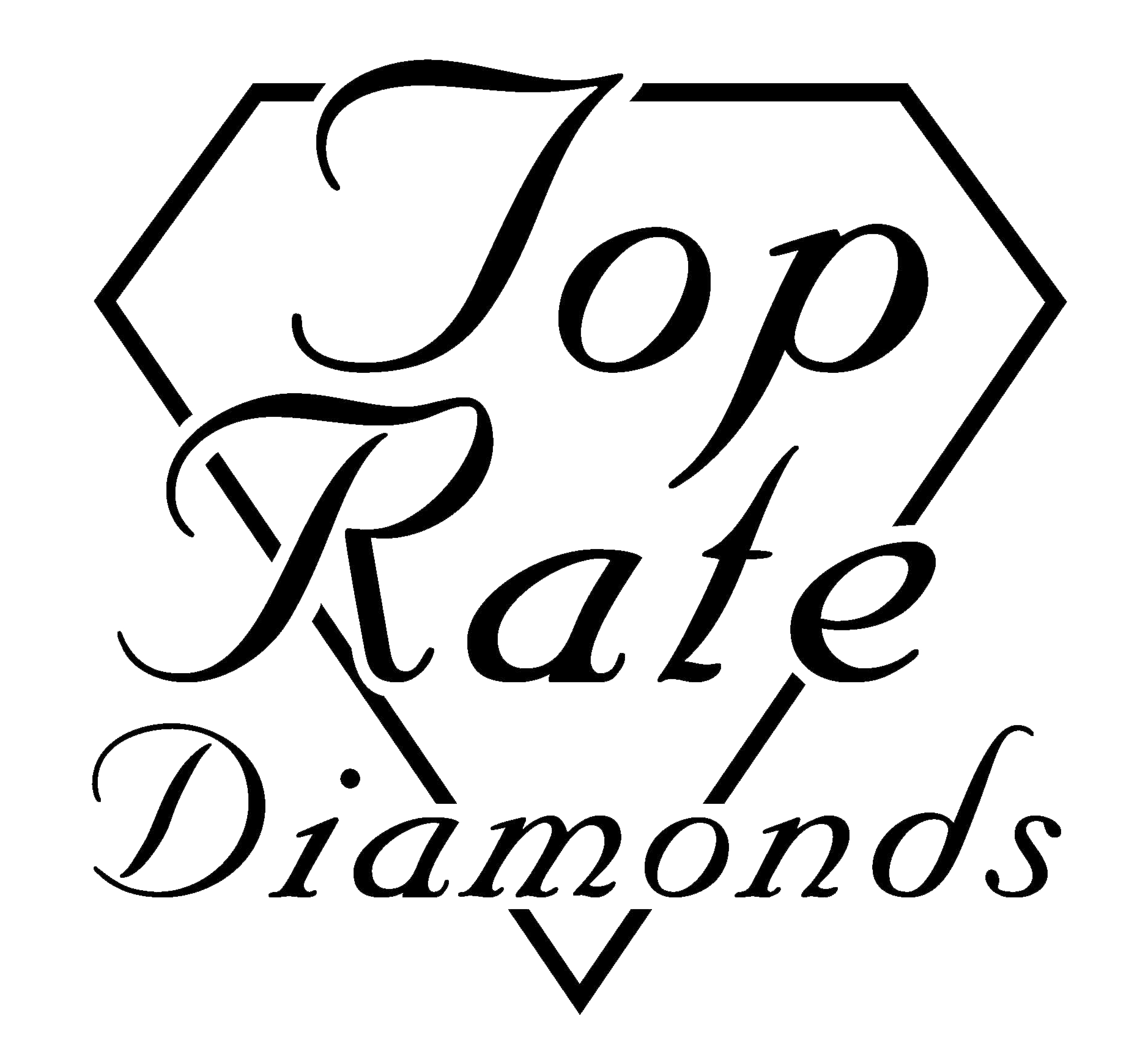The Diamond Education You Won’t Find Anywhere Else
Welcome to a diamond education experience designed to give you the tools to make an informed decision, compare and negotiate prices, and figure out what diamond is right for you. This page will give you insider information on diamonds—the nuances, the trade secrets, and the factors that can make a big difference in both value and beauty.
Carat: Beyond Just Weight
Carat weight is commonly mistaken as an indicator of a diamond’s size, but it actually measures weight. One carat is equal to 0.2 grams—about the weight of a grain of rice. So, while two diamonds of the same shape may have the same carat weight, their dimensions and visual size can vary significantly. This difference often stems from the diamond’s cut quality, which we’ll explore further in the Cut section.
To notice a visible size difference between two diamonds, one typically needs to be about 20% heavier than the other. For example, you’d need to compare a 1.0-carat diamond with a 1.2-carat diamond to observe a noticeable size difference. The chart below serves as a guide to help visualize how carat weight correlates with size for a round diamond (note: the image is not to scale and should be used as a reference).
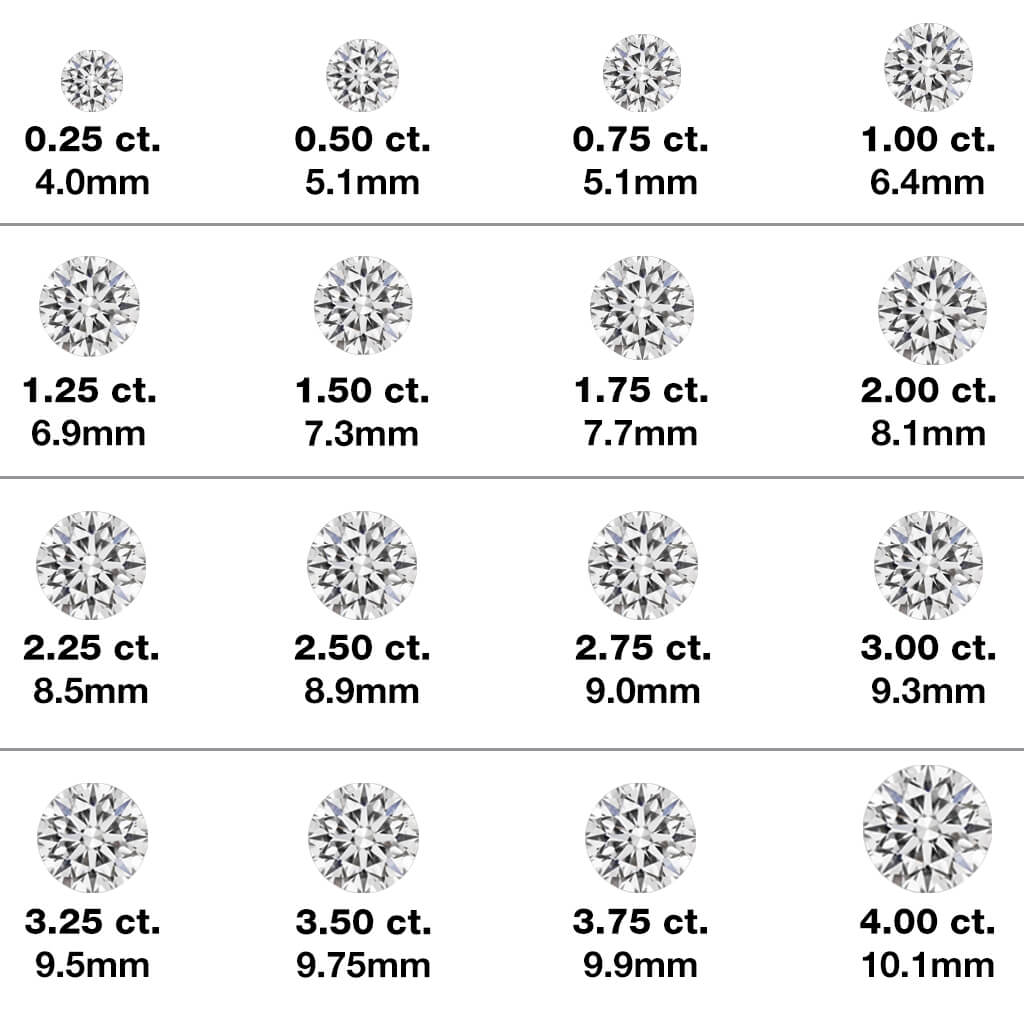
Industry Insight:
Here’s something most buyers don’t realize: the price of diamonds jumps at popular carat sizes (like 1.0, 1.5, and 2.0 carats). If you’re flexible, choosing a carat weight just below these markers (e.g., 0.9 or 1.4 carats) can yield almost the same visual impact for a significantly lower price.
Cut: The Factor that Brings a Diamond to Life
When we talk about cut, we’re not just referring to the shape but also to the proportions, symmetry, and polish that make a diamond sparkle. A well-cut diamond captures light from all angles, transforming it into a fiery brilliance. In the industry, this is the secret sauce—the difference between a dull stone and a mesmerizing one.
Diamond Shapes
Round diamonds offer the most brilliance, but other shapes like princess, cushion, or oval cuts can be equally stunning if cut to ideal proportions. Emerald and Asscher cuts are known for their elegant step-cut facets, highlighting their geometric beauty rather than sparkle. Top Rate Diamonds also offers unique and unconventional shapes, including the Marquise Duchess Cut, Criss Cut, Cadillacs, and more. Explore these distinct shapes on our Diamond Page.
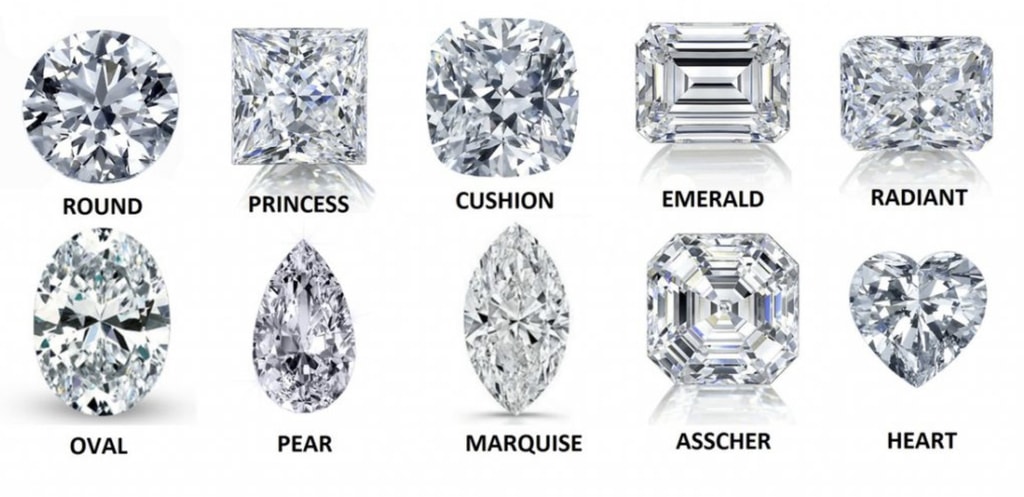
Understanding The Cut Of A Diamond
The science of a diamond’s cut aims to optimize light entry, refract it into white and colored light, and reflect it back in a fiery sparkle. The quality of a diamond’s cut is determined by how well its different sections and aspects are proportioned, such as the Table, Depth, Polish, and Symmetry.
Before diving into the specifics, here are some key cut terms to know:
Brilliance
The total amount of white light reflected by the diamond.
Dispersion (Fire)
Flashes of color that result from light refracting within the diamond.
Scintillation
Sparkling flashes of white light on the diamond’s surface as the diamond or the viewer moves.
Cut Grades
There are several different grades used by the gemological labs to rate the overall quality of the cut.
| Cut Grade | Description |
|---|---|
| Ideal/Excellent | Reflects nearly all light that enters the diamond and achieves maximum brilliance. |
| Very Good | Reflects nearly as much light as an Ideal Cut but for a lower price. |
| Good | Reflects most light that enters the diamond. |
| Fair | Reflects less light than a good cut. |
| Poor | These diamonds are poorly cut and tend to lose most of the light. |
Industry Insight:
Cut quality has a more noticeable effect on sparkle than any other “C.” Opt for the highest cut grade within your budget (we recommend “Ideal” or “Excellent”). Even if you choose a lower color or clarity, a superb cut can still make your diamond appear lively and brilliant.
Understanding Table, Depth, Polish, and Symmetry
Four critical aspects determine the quality of a diamond’s cut: Depth, Table, Polish, and Symmetry. Here’s a breakdown of each element and its impact on a diamond’s sparkle and appearance.
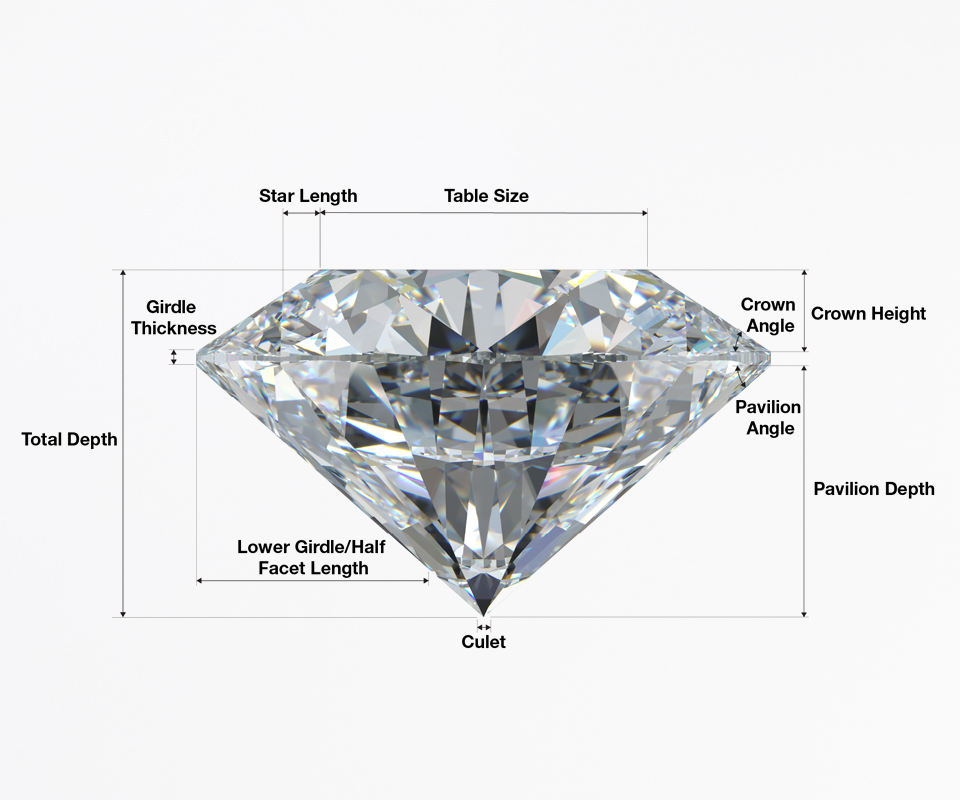
*Click on the Tabs below to explore each element.
Table
The Diamond’s Main Window
Table refers to the largest flat facet on the top of the diamond, acting as the primary window through which light enters and exits. Like depth, the ideal table percentage varies with diamond shapes, but a well-proportioned table allows light to flow through the diamond and reflect back to the viewer.
- Too Large:
Too much light floods the diamond creating a glassy appearance. - Too Small:
Limits light entry, muting brilliance and making the diamond appear dark.
Industry Insight:
There’s a common belief that a larger table makes the diamond look bigger. While a larger table does increase the top surface area, it doesn’t necessarily make the diamond look bigger or more brilliant. In fact, a diamond with an oversized table can end up looking glassy or dull instead of sparkly. Think of it like a window—the bigger the window, the more light you see through it without much reflection. So, while a larger table might sound like a plus, it’s actually all about the right proportions to get the best sparkle and visual appeal.
Depth
Balancing Sparkle and Size
Depth simply means the height of the diamond from the top (table) to bottom (culet). Depth is measured as a percentage of the diamond’s height divided by its width. The ideal depth percentages varying based on diamond shape. When a diamond’s depth is proportioned correctly, light enters through the table, refracts, and reflects back out, maximizing brilliance.
- Ideal Depth:
Light enters through the top, hits the facets inside, and reflects back perfectly. - Shallow Depth:
If a diamond is cut too shallow, the light goes straight through the bottom creating a “glassy” appearance. - Deep Depth:
On the flip side, if a diamond is cut too deep the light escapes from the sides causing the diamond to appear dark.
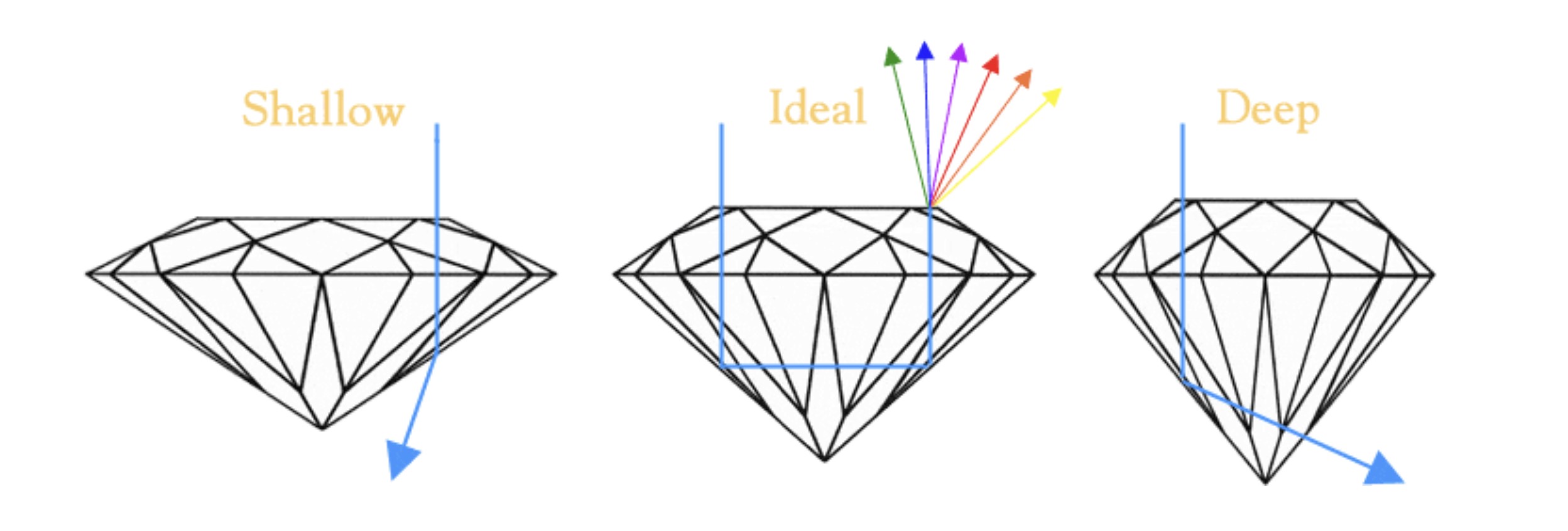
Depth also plays a critical role in the size of the diamond. In the Carat section we pointed out that two round diamonds with the same carat weight can vary in size. The deeper a diamond, the more of its carat weight is distributed toward the bottom (pavilion) portion, reducing its surface area and making the diamond appear narrower and smaller. In contrast, a shallower diamond will have more weight distributed towards the top portion, making the diamond appear wider and larger.
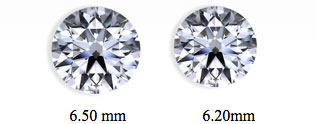
Together, a balanced table and depth allow light to move through the diamond in just the right way, creating a fiery sparkle that brings the diamond to life. The chart below provides the ideal ranges for the most common shapes.
| Shape | Table | Depth |
|---|---|---|
| Round | 54 – 60% | 58 – 63% |
| Oval | 53 – 62% | 60 – 72% |
| Emerald | 60 – 78% | 60 – 73% |
| Pear & Marquise | 53 – 60% | 48 – 65% |
| Heart | 53 – 66% | 48 – 65% |
| Radiant & Princess | 69 – 80% | 66 – 74% |
Polish
The Diamond’s Surface Finish
Polish is the smoothness of a diamond’s surface after it’s been cut. A high-quality means the surface is free from scratches or marks, so light can pass through without any interruptions. Polish is graded from Excellent to Poor, and a higher polish grade boosts the diamond’s shine and value.
- Excellent/Very Good Polish:
Light flows seamlessly across the surface, maximizing sparkle. - Fair / Poor Polish:
Marks or imperfections scatter light, reducing the diamond’s brilliance and causing it to look dull or hazy.
Symmetry
Light Refraction
Symmetry is all about how well the shape and facets of a diamond are aligned. Good symmetry helps light bounce evenly inside the diamond, breaking up white light into all the colors that create that stunning sparkle. Just like polish, symmetry is graded from Excellent to Poor. The better the symmetry, the more balanced and beautiful the sparkle!
- Excellent/Very Good Symmetry:
Facets are precisely aligned, creating a beautiful sparkle. - Poor Symmetry:
Misaligned facets cause light to bounce irregularly, diminishing the sparkle.
Color: Finding the Right Hue for You
Diamonds come in many colors, but the typical scale ranges from colorless to yellow. Nitrogen inside the diamond causes it to take on a yellow tint, which in turn decreases the amount of light it lets through. So the less color a stone has, the more brilliant it is and the brighter it shines. Because of this correlation, colorless stones are considered most valuable, and the value decreases with increasing color. The exceptions to this rule are Fancy diamonds, which can bear a deep yellow color that makes them rare and expensive.
Diamonds are graded on a color scale from D (colorless) to Z (light yellow or brown). Generally, D, E, and F grades are considered colorless, while G-H are near colorless, offering good value without visible warmth to the naked eye. The difference between two consecutive color grades is so subtle that gemologists use a machine to accurately measure the grades. The average person usually requires a difference of at least two color grades to see a difference.
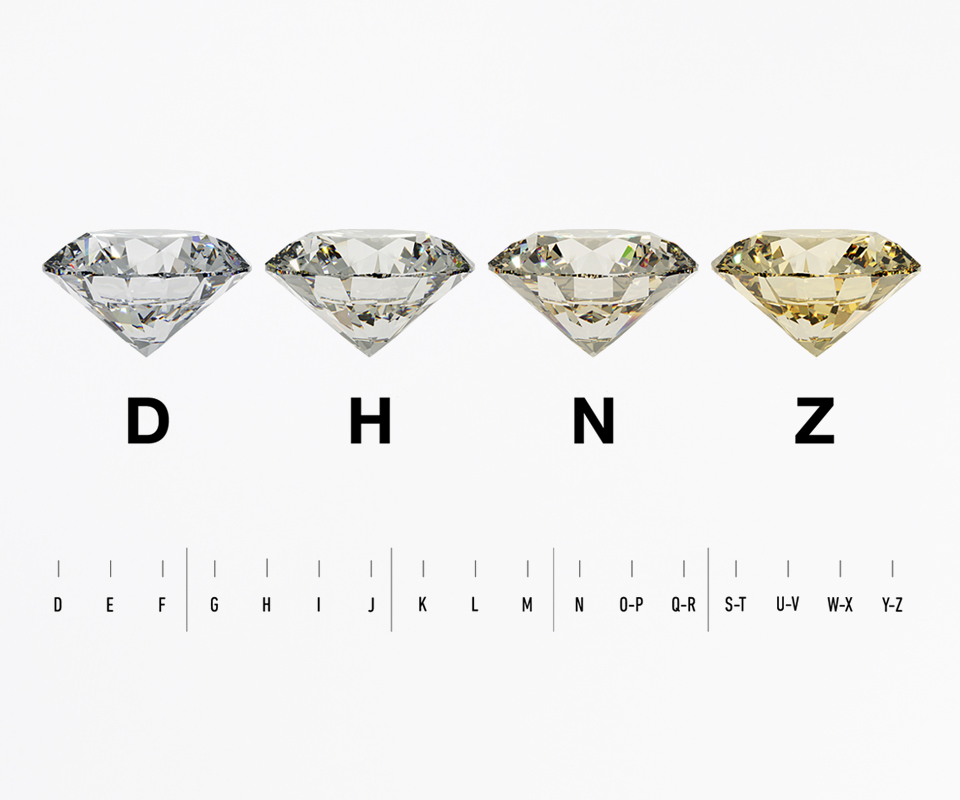
Industry Insight:
Round diamonds and step-cut shapes like Emerald and Asscher are great at masking warmer tones. On the other hand, brilliant cuts like oval, cushion, and radiant cut diamonds are more sensitive to warmer colors and can start to show a yellow tint below an H color grade. So, if you want a larger diamond without breaking the bank, opting for a round or step-cut diamond in a lower color grade can help you put more of your budget toward size.
Fancy Color Diamonds
Fancy color diamonds are rare and come in amazing shades like pink, blue, yellow, green, and even red! They’re unique because only about 1 in 10,000 diamonds forms with natural color, making them much more difficult to find than traditional white diamonds. Their colors range from light to vivid, with the deepest shades being the most valuable.
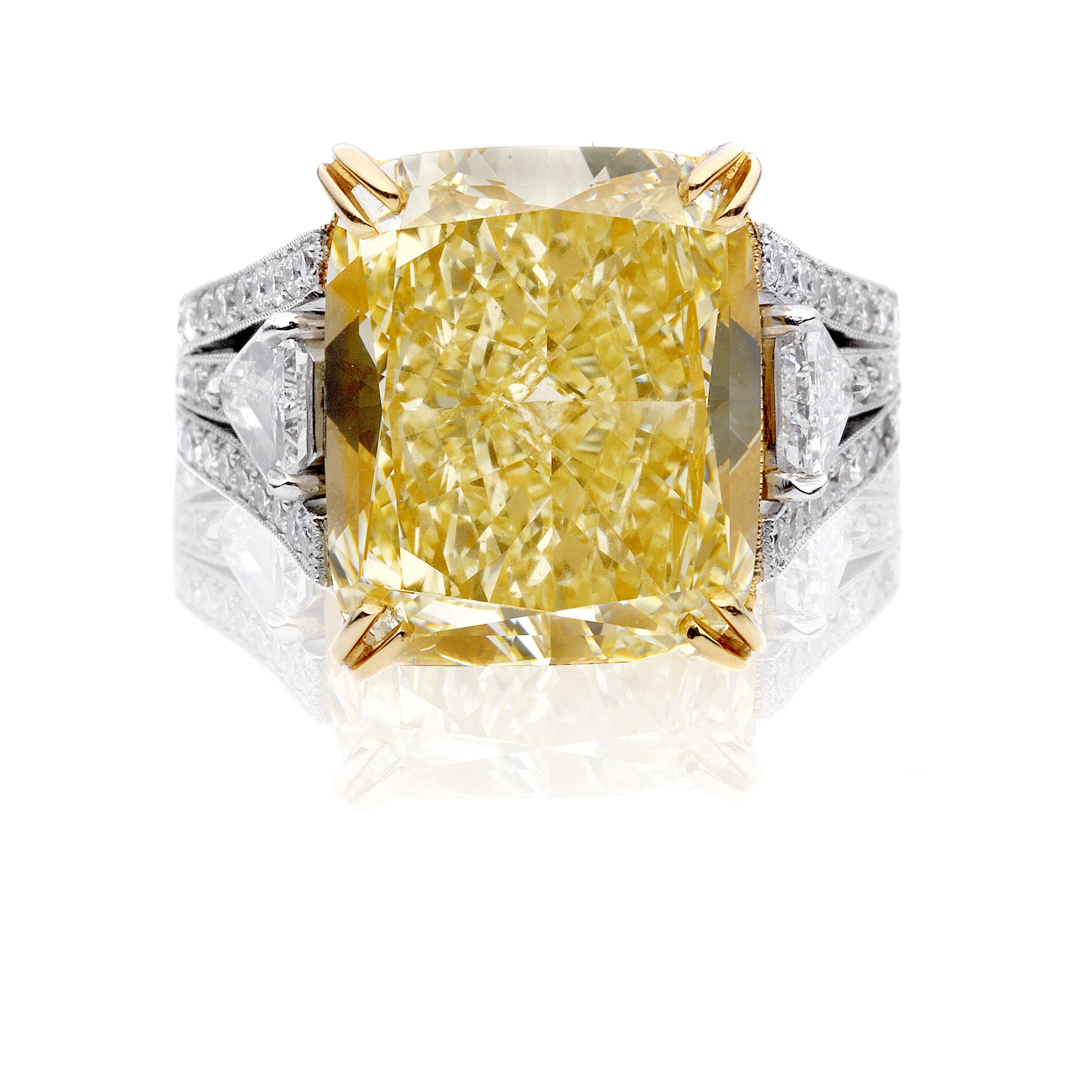
Fluorescence
Diamond fluorescence refers to a diamond’s ability to emit a soft glow when exposed to ultraviolet (UV) light, like sunlight or black lights. About 25-35% of diamonds display some level of fluorescence, usually showing up as a blue glow, though some may show other colors like yellow or green. Fluorescence is graded from None to Very Strong, depending on the intensity of the glow. Historically fluorescence had a negative connotation among consumers, but in recent years, a trend has emerged where consumers specifically look for fluorescence in diamonds so their rings will glow under black lights in nightclubs.
Industry Insight:
For diamonds with lower color grades (like H to J), a bit of fluorescence can actually enhance their appearance, giving them a whiter look. However, in higher color grades (D-F), strong fluorescence may add a slight bluish tint and sometimes make the diamond appear hazy or milky. So, if you’re opting for a warmer color to save on cost, medium fluorescence can help your diamond look up to two color grades whiter.
Clarity: The Cleanliness of a Diamond
The clarity of a diamond refers to how clean it is from imperfections, or flaws, which is why a perfect diamond is called flawless. Clarity grades range from Flawless (FL) to Included (I4), and the more flaws are present in the diamond the lower its value. Imperfections can be found inside the diamond or on its surface. Internal flaws are known as inclusions while exterior flaws are called blemishes.
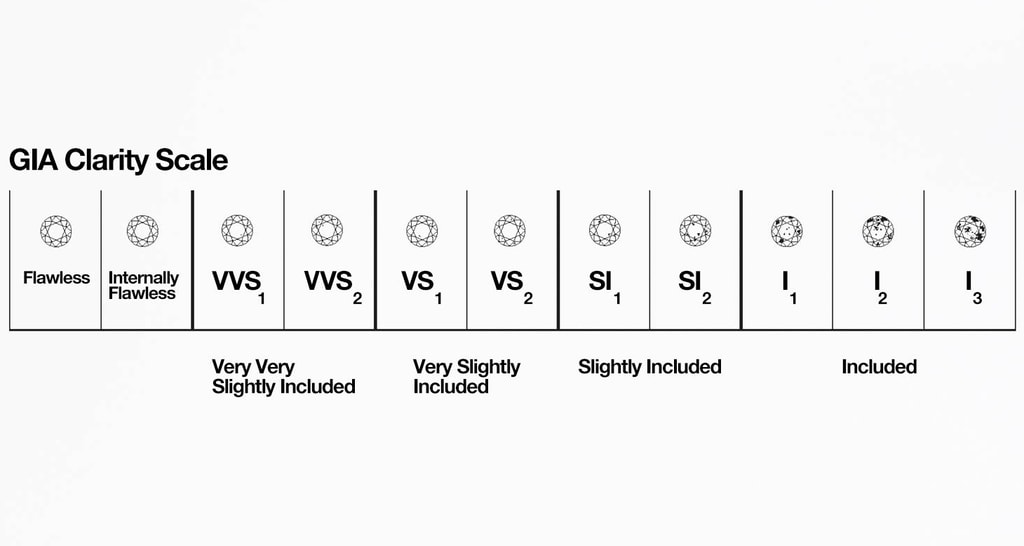
Brilliant-Cut Diamonds:
Brilliant-cut diamonds (like round, ovals, or cushion cuts) hide minor inclusions well. They sparkle so much that small inclusions are less noticeable, even in lower clarity grades like SI1.
Step-Cut Diamonds:
Step-cut diamonds (like emerald and Asscher cuts) are a different story. Their large, open facets are cut like “steps,” creating a window-like effect that shows off more of what’s inside the stone. Because of this, even VS2 clarity grades can sometimes show inclusions.
Industry Insight:
“Eye-clean” diamonds provide the best value. These are diamonds where the imperfections are not visible to the naked eye, and can be found in clarity grades as low as SI2. Diamond professionals know how to spot these lower-clarity eye clean diamonds, offering incredible value for buyers. They can identify diamonds where inclusions are well-hidden and won’t affect the beauty of the stone, allowing you to get a bigger and white diamond.
Putting It All Together
When selecting a diamond, it’s all about balancing the Four Cs in a way that resonates with your values and preferences. An ideal diamond isn’t just about perfection on paper; it’s about finding a stone with qualities that harmonize. A beautiful diamond will always be more than a sum of its parts—it’s a piece that reflects brilliance, rarity, and your unique taste.
How To Avoid Common Diamond Buying Mistakes
Top Search Results Aren’t Always the Best Choice
We’re here to guide you past these pitfalls and help you find the perfect diamond. Visit us for expert advice and peace of mind, knowing you’re getting exceptional quality at the right value.
Don’t Rely Solely on a Diamond’s Certificate
Use the certificate as a helpful guide, but always view the diamond yourself to ensure it meets your expectations for beauty and brilliance.
Beware of Misleading Certifications
Always insist on certification from GIA, the industry’s most trusted lab. This ensures you’re getting a diamond with an accurate and reliable grade.
Understand Fluorescence Before You Buy
Always check the lab certificate to determine the level of fluorescence. Ensure the seller accounts for it in the price. Educate yourself further on fluorescence to make an informed decision.
Beware of Deep or Shallow-Cut Diamonds
On the other hand, shallow diamonds appear larger for their carat weight, but if the cut is too shallow, it compromises brilliance. The diamond can take on a glassy look, with light passing through instead of reflecting back, making it appear lifeless.
Familiarize yourself with the ideal depth ranges for the diamond shape you’re considering. Visit our Diamond Cut Education page to learn more about proper cut proportions and avoid costly mistakes.
